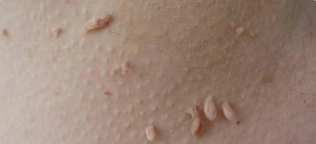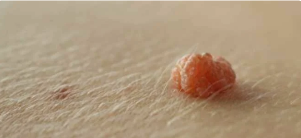
The human papillomavirus (HPV) – a common name for a group of viruses that cause various diseases. Known more than 100 types. The pathogen spread throughout the world. In order to avoid infection, it is important to know how is the human papilloma virus.
What is HPV infection?
HPV infection – a group of virus diseases caused by the human papilloma virus. At the moment, studied and described over 100 types of the virus. For a long time, scientists have studied the morphology of the organism, which made it possible to find out which types of viruses that provoke the pathology. Were identified separately, the group of HPV high-risk for cancer.
Due to the fact that HPV primarily affects the reproductive system, a great attention to study the problems given to the gynecologists. To talk about what is HPV in gynecology, it is necessary to be aware of the high risk of developing cancer in the cervix. Experts found that the virus directly, rather the 16-th and 18-th types of provoke the development of cancer process in the female reproductive system.
HPV transmission and infection
HPV is known for its resistance against environmental factors, so long time can keep the activity in the environment. This explains the ability of a pathogen to widespread. However, the direct transfer of HPV of the droplets does not occur. Talking about how is HPV transmitted from person to person doctors point to the obligatory presence of a direct contact with the skin and mucous membranes of a carrier of the virus.
The way of transmission of HPV varied:
- sexual;
- contact-household;
- vertical.
The most common way of transmission of HPV

First heard about this type of pathogen, patients often ask the doctor: is passed if the human papilloma virus sexually. Doctors say that this method is the most common. According to statistics, about 70% of the people who are sexually active are carriers of HPV. The infection can occur repeatedly throughout life.
Most women and men become infected with HPV after a couple of months since the beginning of active sexual life. It should be noted that HPV is often linked to sexually transmitted infections, but infection is possible during sex without penetration. Contact with the genitals of the virus may lead to infection.
Doctors call and the following ways of transmission of HPV:
- when they kiss;
- during oral sex.
HPV infections in the home
Some infectious disease specialists assign the household the transmission of HPV. The percentage distribution of the virus in this way is small, but we can not completely exclude this possibility. The virus can be active, hitting the pool, the bath, so infection is available in public areas.
Attacks in the home takes place through kissing, use of personal care products infected with HPV. In such cases, may increase the risk of infection:
- the weakening of the immune system,
- violation of rules of personal hygiene.
The risk of HPV infection
The probability of HPV infection increases sharply with the beginning of sexual life. This transfer path is regarded as the most important. Thus, the specialists identify a number of factors, the presence of which is several times increases the risk of infection:
- early sexual debut;
- frequent change of sexual partners.
- the neglect of birth control.
It is separately necessary to tell about the possibility of infection in childhood. In most cases, HPV is transmitted from the mother during birth. When promoting through the birth canal infection occurs baby. Children are easier to tolerate the infection, they have it almost does not occur. In addition, with the arrival together with mother's milk ready-made antibodies observed a spontaneous healing.
How is HPV infection?
Infection with HPV occurs by direct contact between mucous membranes, skin and genitals. During intercourse often have microcracks and damages on the mucous membrane, which only increases the risk of HPV infection. While there are some differences in the mechanisms for the transmission of the virus in women and men.
How is human papillomavirus in men?

The probability of HPV infection in men is directly dependent on the number of regular sexual partners. Frequent promiscuity in several times to increase the likelihood of infection. In this case, the man in most cases not aware of the presence of the HPV virus in the body. The result is the spread of the virus further. 90% of sex occurs infection of the partner, who was previously completely healthy.
How is the woman a human papilloma virus?
Ways of infection with HPV in women do not differ from those characteristic of men. In the first place is sexual. But the risk of infection in women and increases some factors.
Among the gynecologists provide:
- early sexual debut;
- frequent change of sexual partners.
- abortion;
- traumatic birth in the anamnesis;
- gynecological diseases;
- stress;
- long-term use of oral contraceptives.
Transferred baby the human papilloma virus?
To know about the presence of HPV in the body, women who plan pregnancy in the near future, one can wonder whether transmitted human papillomavirus from mother to child. Experts say that the risk of infecting the child exists. But the children have rarely HPV, ways of infection are different from the adults. The transfer often happens at the stage of promotion of the fetus through the birth canal: the virus from the mucous membranes of the mother pass to the child.
It is worth noting that the risk of such infection is low. In most cases, the kid's body manages to get rid of HPV within the first 2-3 months of life. This happens due to the receipt in the body of the infant antibodies from the mother's milk. The greatest risk of HPV for young children are respiratory tract lesions – appearance of polyps. Such cases are rare, and are treated more as exceptions.
HPV how long after exposure?
Learn about how the human papilloma virus, many patients are interested in the timing of first symptoms. Doctors can't say how quickly manifested after infection with HPV.
Very important are the following factors:
- the age of the patient.
- the presence of chronic inflammatory processes in the body;
- the state of the immune system.
In practice the clinical manifestations of HPV are different. The appearance of warts, changes in the affected cells that can be observed after a few weeks or months. In some cases first lesions on the skin in the groin area and genitals are detected a year later after having been hit by a papilloma virus in the body. To determine the exact time to get the HPV in the organism is possible on the basis of laboratory tests.
Signs of HPV-infection
Symptoms of HPV infection occurs sores on the genitalia. In most cases the virus causes characteristic skin lesions. Patients record the vulgar appearance of papillomas and genital warts. Externally, these growths resemble a cauliflower, so to confuse them with other skin manifestations is difficult.
In women papillary growths pale pink color located:
- in the area of the labia minora;
- in the groin;
- on the clitoris;
- in the vicinity of the external opening of the urethra;
- at the end of the vagina.
In some cases, warts are formed in the anus, if the woman is into anal. Strong growth of such formations leads to bleeding, pain during sexual intercourse. Men of education are located in the pubic area, the crotch, at least on the surface of the penis.
Vaccination against HPV after infection
Even for those who do not know, how is the human papilloma virus, it is not always possible to avoid infection. After rehabilitation treatment, to prevent HPV infection, to prevent development of relapse, doctors carried out the vaccination against the human papilloma virus. Vaccines prevent the development of virus-infection in 15 years or more.














































































